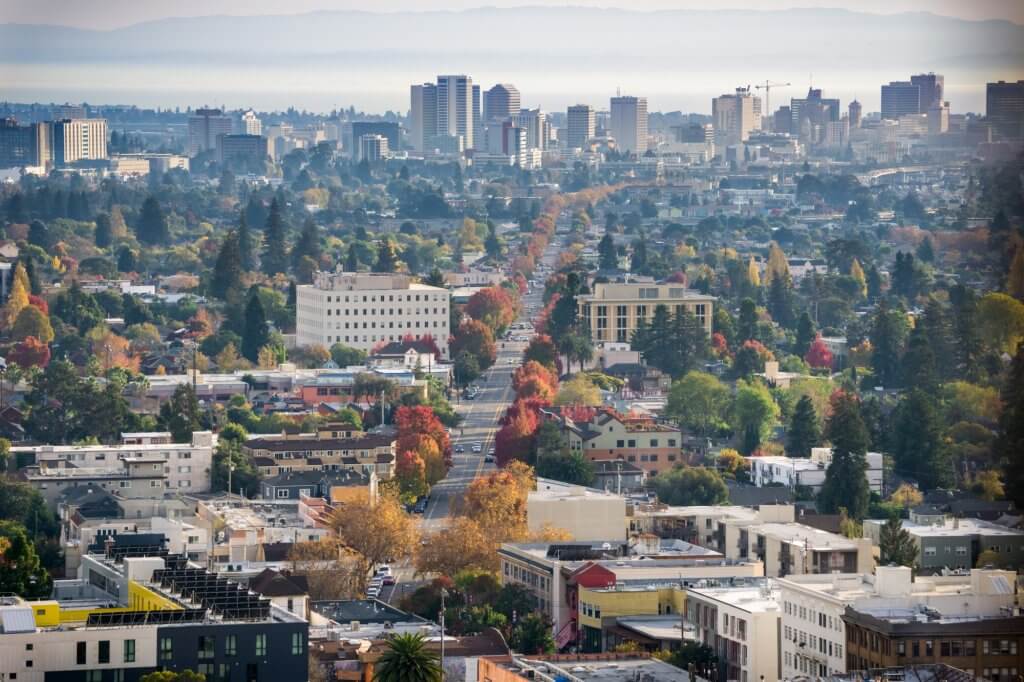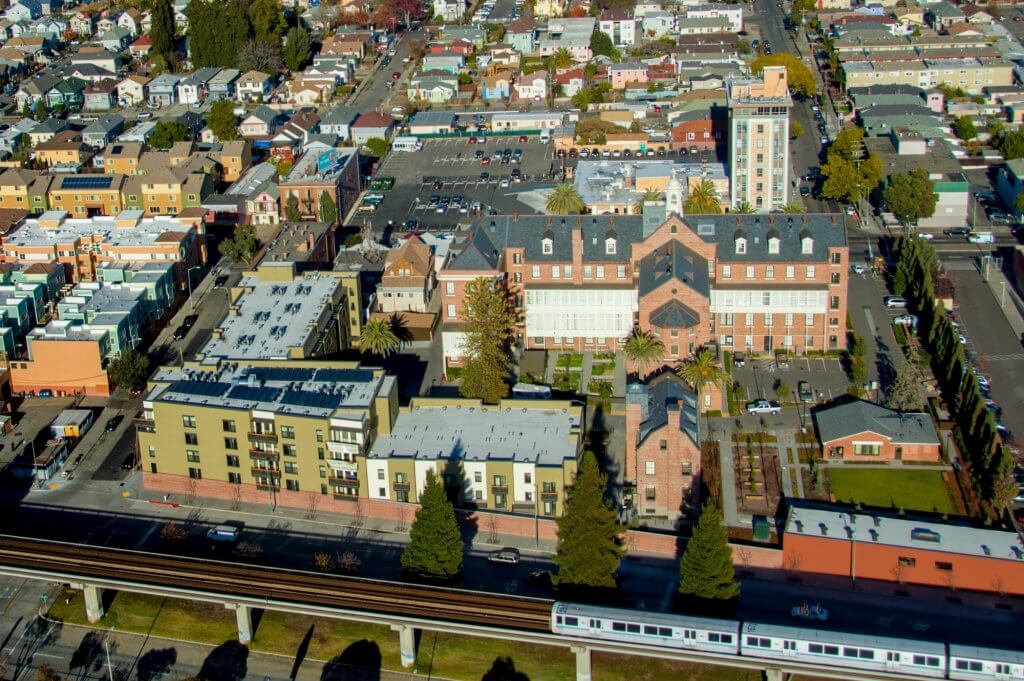Single-Family Zoning Reform Highlights a Breakthrough in California Housing Policy
Published On September 23, 2021
For the past several years, California lawmakers have proposed bold, sweeping, and controversial measures to address the state’s spiraling housing and homelessness crisis. Unfortunately, most of the more significant of these efforts were stalled or watered down, victims of the legislature’s infamously cut-throat housing politics. This has left housing advocates frustrated with lawmakers’ inability to allocate adequate resources and pass new laws meaningful enough to meet the scale of California’s massive and persistent housing affordability challenges.
But 2021 was a breakthrough year for California housing. Buoyed by a unified and coordinated effort in the Senate and an unexpected budget surplus—as well as a return to regular legislative procedures following a pandemic-shortened 2020 session—the legislature and the administration were able to move forward many top priorities. Lawmakers approved historic statewide zoning reforms and committed unprecedented resources for the creation of more affordable and supportive housing. The state also led the nation on the depth and duration of tenant eviction protections for renters impacted by COVID-19.
To be sure, the bills passed this year will not solve the state’s housing challenges alone, and much more must be done in the coming years to sustain this momentum in order to adequately address our ongoing supply and affordability challenges.
A Breakthrough in Single-Family Land Use Reform
In 2021, the California legislature voted to eliminate single-family-only zoning with the passage of Senate Bill 9, introduced by Senate President pro Tempore Toni Atkins. Undoubtedly the most controversial housing proposal in this year’s session, SB 9 requires all jurisdictions to allow for up to four units to be built on most existing single-family parcels in California. The passage of this bill is significant given that nearly two thirds of zoned land in California is reserved for single-family homes, which drastically limits where new development can take place. After clearing both houses of the legislature, Governor Newsom signed SB 9 into law last week, and the law will take effect Jan 1, 2022. California becomes the second state in the country to allow multiple homes on single family parcels, joining Oregon which passed similar legislation in 2019.
SB 9 will not solve the state’s housing deficit on its own: our recent analysis shows that just 5.4% of single family parcels would be financially capable of supporting new housing as a result of SB 9. Still, its passage is significant for many reasons. Single-family-only zoning is rooted in exclusion, and unwinding this vestige of racial segregation is long overdue. The parcel subdivision provision of SB 9 has the potential to open up new financing options and wealth-building opportunities for low- and moderate-income homeowners. While legislation predating SB 9 expanded the ability of homeowners to add an accessory dwelling unit on their single-family property, our research has found that the wealth-building benefits are generally only available to affluent homeowners who have access to cash savings or home equity. SB 9 opens up the option of traditional construction financing to build the additional homes on a property.
SB 9 was also signed by the Governor alongside Senate Bill 10, a bill introduced by Senator Scott Wiener that allows cities to bypass the typical environmental review process when rezoning areas for up to ten new homes. Senate Bill 478, authored by Senator Wiener, also passed the legislature as well. The bill would limit Floor Area Ratio (FAR) requirements for small-scale housing, essentially removing a tool some cities have used to to stymie housing production. Our analysis of an earlier version of this bill shows that FAR is not used widely in residential land use regulations, but where it is, these new limits could be impactful.
However, other bills proposing land use reforms for larger, multifamily housing failed to pass. One of the marquee bills in the Senate Housing Package, Senate Bill 6, from Senator Anna Caballero would have required cities to allow for a certain amount of housing to be built in areas zoned for commercial uses. A similar bill, Assembly Bill 115 introduced by Assemblymember Richard Bloom, stalled as well. As our 2020 research found, commercial areas are ubiquitous throughout the state and could prove to be an important source of new residential development. A forthcoming Terner Center study will examine how many new homes we would expect to be built on commercial lands, based on historic development trends, and ideas for catalyzing more growth in these areas, including pathways for revisiting the policies proposed in these stalled bills.
Another sweeping housing bill that fell just short of passage was Assembly Bill 1401 introduced by Assemblymember Laura Friedman. This bill would have eliminated minimum parking standards for all development near high-quality transit. Our analysis of the bill found that it could be potentially significant given the costs to meet high residential parking standards imposed by some cities.
Historic Budget Commitments to Supportive and Affordable Housing
Even before the session ended, Governor Newsom and the legislature used a significant budget surplus to commit billions in new spending for the expansion of supportive housing through the Homekey program and the creation of deed-restricted affordable housing, as well as funds to stand up a new accountability unit within the state’s Department of Housing and Community Development (HCD).
Specifically, $10.3 billion was allocated to the creation and preservation of new affordable housing, including $1.75 billion issued by the end of this year for 90 “shovel ready” affordable housing projects, which together could lead to 6,200 to 7,300 new homes. In addition, this year’s budget includes $12 billion specifically for housing and services to address homelessness. This amount includes $5.8 billion to expand Homekey projects that have a primary goal of acquiring and converting existing properties, such as hotels, for conversion into permanent supportive housing. The administration estimates that these funds will lead to 42,000 new housing units for people experiencing homelessness.
In addition to unprecedented funding commitments for the creation of affordable and supportive housing, the budget also allocates resources to fund more stringent enforcement of existing housing accountability laws, which has been a priority for the administration. Specifically, $4.3 million was included in the budget to establish an “accountability unit” within HCD. This unit will be tasked with proactively ensuring that California localities are in compliance with the state’s recently-strengthened housing laws.
Looking Ahead to 2022
While this year’s legislative session is a significant step forward, many other housing issues remain unaddressed. For example, the cost of construction in California remains at historic highs, which constrains the market’s ability to provide housing that is affordable to broader segments of the population, while also making our finite affordable housing subsidies less efficient. Efforts to consolidate and simplify the state’s myriad affordable housing subsidy programs also remain unresolved, even as this complex and fragmented system drives up the overall costs for providing affordable homes.
The economic impacts of the COVID-19 pandemic, especially for renters, remains a pressing issue. The state’s eviction moratorium expires at the end of September, and Emergency Rental Assistance remains slow to reachthose most in need. As our recent work has shown, the economic fallout of the pandemic hit lower-income renters and smaller landlords particularly hard. With many communities once again experiencing rapid housing price increases, the state’s affordability housing crisis is far from over, and continued attention to the full suite of policies needed—from production to preservation and protection—is critical.
Below is a recap of other notable housing bills that passed during the 2021 session (the Governor has until October 10th, 2021 to take action on remaining bills):
AB 215 (Chiu) – Gives HCD greater authority to address compliance to state housing laws, and also allows HCD to consult with cities mid-RHNA cycle to address projected housing production shortfalls.
AB 602 (Grayson) – Creates new standards for impact fee nexus studies, as well as requiring cities to levy some housing impact fees on a per square foot basis, rather than a per unit basis. Also asks HCD to develop an impact fee nexus study template.
AB 832 (Chiu) – Extends existing COVID-related eviction moratorium through September 30th, 2021. Also makes changes to the Emergency Rental Assistance Program to allow for tenants to have 100% of for both arrearage and prospective payments.
AB 1304 (Santiago) – Clarifies that public entities are mandated to comply with Affirmatively Furthering Fair Housing requirements, and also requires cities to include AFFH considerations in their Housing Element.
AB 1487 (Gabriel) – Establishes the Homelessness Prevention Fund to fund education, outreach, and legal services targeted towards preventing homelessness among particularly vulnerable renter populations.
SB 7 (Atkins) – Expands an existing CEQA exemption to include infill projects that are at least $15 million in cost and utilize a union labor force, among other requirements.
SB 8 (Skinner) – Extends the Housing Crisis Act of 2019 (SB 330) until 2030, which prohibits jurisdictions from reducing development capacity. The original policy had been scheduled to sunset in 2024.
SB 290 (Skinner) – Increases the incentives available to developers who utilize density bonus law for low-income student housing as well as moderate-income for-sale housing projects.
SB 477 (Wiener) – Requires jurisdictions to report more data on their Annual Production Reports starting in 2024, including information on housing projects that utilize the Density Bonus Law, Senate Bill 35 (2017), ADU or JADU laws, or are built through Project Homekey.
SB 791 (Cortese) – Creates the Surplus Land Unit within the state Department of Housing and Community Development (HCD), to facilitate the development and construction of housing on surplus property held by local agencies.





